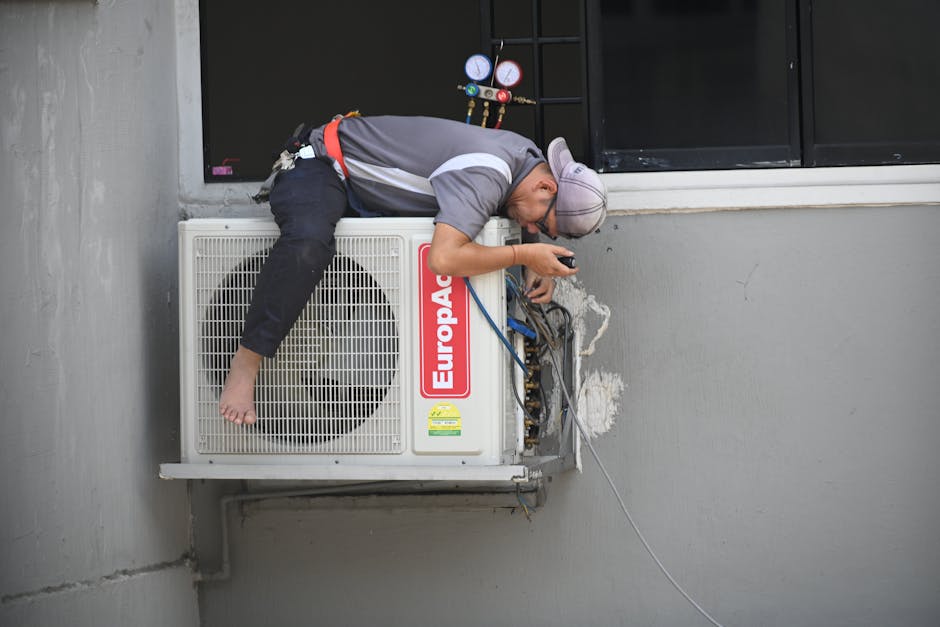Retention strategies for HVAC
The HVAC industry in the GCC faces a critical challenge. High demand for climate control meets a severe shortage of skilled technicians. However, this shortage creates intense competition for talent. Additionally, the high cost of recruitment and training makes employee turnover financially draining. Furthermore, losing experienced staff directly impacts service quality and customer satisfaction. Therefore, implementing effective retention strategies for HVAC technicians is no longer optional. It is a fundamental business imperative for sustainable growth. This guide explores comprehensive methods to secure your most valuable asset: your people.
Understanding Retention strategies for HVAC
Employee retention refers to an organization’s ability to keep its employees. In the HVAC context, it means preventing skilled technicians from leaving. The GCC’s extreme climate makes HVAC services essential year-round. Consequently, the pressure on technical teams is immense. High turnover disrupts operations and damages company reputation. Moreover, the specialized nature of HVAC work requires significant training investment. Therefore, understanding the root causes of turnover is the first step. Common reasons include inadequate compensation, poor work-life balance, and lack of career progression. Addressing these issues forms the core of any successful retention plan.
Retention strategies for HVAC Benefits
Investing in employee retention yields substantial returns. First, it drastically reduces recruitment and onboarding costs. Second, it leads to higher customer satisfaction and loyalty. Experienced technicians provide faster, more reliable service. Additionally, long-term employees possess deeper institutional knowledge. They understand specific client needs and system peculiarities common in the region. Furthermore, a stable workforce improves team morale and safety. Low turnover creates a positive company culture. This culture then attracts other top-tier talent. Thus, a robust retention program creates a virtuous cycle of growth and stability.
How Retention strategies for HVAC Works
A successful talent retention framework operates on multiple levels. It begins with a thorough analysis of why employees leave. Exit interviews and employee surveys are crucial tools. Next, management must develop targeted initiatives based on this feedback. These initiatives span financial, professional, and personal domains. For example, competitive pay must be paired with clear career paths. Similarly, recognition programs should complement a positive work environment. Moreover, these strategies require consistent application and management buy-in. They are not one-time fixes but ongoing commitments. Consequently, their implementation must be strategic and measured for long-term success.
Best Retention strategies for HVAC Practices
Adopting industry best practices is essential for results. First, offer competitive, transparent compensation packages aligned with International Labour Organization guidelines. This includes base salary, performance bonuses, and overtime pay. Second, create structured career advancement ladders. Technicians need to see a future within your company. Additionally, invest heavily in continuous training and certification support. This keeps skills sharp and shows investment in their growth. Furthermore, implement a formal mentorship program. Pairing new hires with seasoned pros accelerates integration. Finally, prioritize health and safety beyond World Health Organization workplace standards. Provide top-quality tools and protective gear for the harsh GCC environment.
Retention strategies for HVAC Implementation
Effective implementation requires a phased and deliberate approach. Start by forming a dedicated task force including HR and senior technicians. This team should audit current retention rates and identify pain points. Next, develop a customized action plan with clear, measurable goals. For instance, aim to reduce voluntary turnover by 20% in one year. Then, communicate this plan transparently to all staff. Employees must understand the company’s commitment to their well-being. Additionally, allocate a dedicated budget for these initiatives. This demonstrates genuine investment, not just empty promises. For support, consider an expert consultation to tailor the plan to the GCC market’s unique demands.
Advanced Retention strategies for HVAC Strategies
Go beyond basics with advanced workforce stabilization tactics. Introduce flexible scheduling or compressed workweeks to combat burnout. This is especially valuable during peak summer months. Furthermore, develop a technical leadership track parallel to management. This allows master technicians to advance without leaving their trade. Moreover, create a profit-sharing or equity program. It gives employees a direct stake in the company’s success. Additionally, leverage technology to reduce administrative burdens. Mobile apps for paperwork can free up more time for skilled work. Also, sponsor technicians for prestigious industry awards and recognition. These advanced methods build deep loyalty and significantly reduce the urge to seek opportunities elsewhere, keeping your team intact.
Retention strategies for HVAC Success Tips
Sustaining success requires ongoing attention and adaptation. First, regularly track key metrics like turnover rate and employee satisfaction. Use this data to refine your approaches continuously. Second, ensure frontline supervisors are trained in people management. Often, people leave managers, not companies. Additionally, celebrate tenure milestones publicly to foster a culture of appreciation. Furthermore, stay informed on regional UAE government employment regulations and U.S. Department of Commerce trade information. This ensures your packages remain competitive. Finally, always lead with empathy. Recognize the physical and mental demands of the job. A simple “thank you” can be as powerful as a bonus in making staff feel valued and seen.
Future of Retention strategies for HVAC
The future of employee retention is proactive and personalized. Companies will use predictive analytics to identify flight risks before they resign. This allows for preemptive intervention. Furthermore, as noted in World Bank economic reports, the GCC’s economic diversification will create new technical specialties. Retention will hinge on upskilling technicians for these new roles like smart building systems. Additionally, holistic well-being programs addressing mental health will become standard. The focus will shift from merely retaining bodies to nurturing whole individuals. Therefore, companies that build a reputation as employers of choice will thrive. They will attract and retain the best talent in an increasingly competitive landscape.
Frequently Asked Questions
What is the biggest factor in HVAC technician turnover in the GCC?
The primary factor is often a combination of intense summer workload leading to burnout and perceived lack of career progression. Competitive compensation is a baseline, but technicians increasingly seek clear paths for advancement and skill development.
How can small HVAC companies compete with larger firms on retention?
Smaller firms can leverage their agility and family-like culture. They can offer more flexible schedules, faster decision-making, and greater visibility for technicians. Highlighting a close-knit team environment and direct access to leadership can be powerful retention tools.
Are financial incentives the most important retention strategy?
While crucial, financial incentives are a hygiene factor. Long-term retention is built on non-monetary aspects like respect, work-life balance, a positive safety culture, and meaningful career growth opportunities. Money might attract, but culture retains.
What role does training play in technician retention?
Training is a critical pillar. Investing in continuous learning signals that the company values the technician’s long-term development. It keeps skills relevant, prevents stagnation, and prepares them for future promotions, making them less likely to look elsewhere for growth.
How can we measure the success of our retention strategies?
Key metrics include voluntary turnover rate, average tenure, employee satisfaction scores, cost-per-hire, and time-to-fill vacant positions. Tracking these metrics over time provides a clear picture of your strategy’s effectiveness and ROI.
Why is mentorship important for retaining HVAC staff?
A strong mentorship program accelerates integration, reduces early-career frustration, and transfers invaluable tacit knowledge. It builds strong interpersonal bonds and a sense of belonging, which are powerful antidotes to turnover.
Conclusion
Mastering employee retention is the cornerstone of a successful HVAC business in the GCC. The region’s unique challenges demand a thoughtful, multi-faceted approach. This goes beyond just offering a competitive salary. It requires building a supportive culture, clear career paths, and recognizing the whole person. Therefore, the companies that prosper will be those that view their technicians as long-term investments. By implementing the retention strategies for HVAC outlined in this guide, you can build a loyal, skilled, and highly motivated workforce. This team will drive customer satisfaction, operational excellence, and sustainable profitability for years to come. Ready to build a resilient team? Explore our professional resources and schedule an appointment to develop your customized retention plan today.




